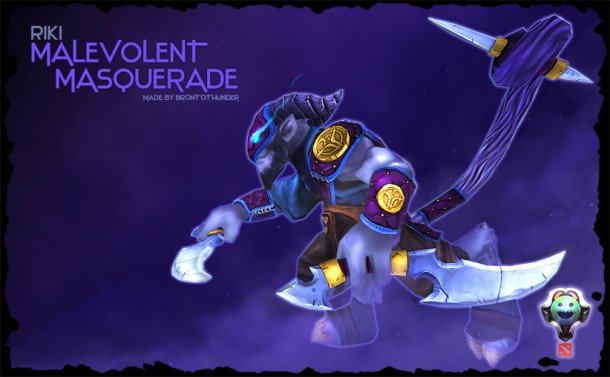Meet the item creators: pro and self-taught artists making millions from Dota 2

“Mostly, people get frustrated about their own stuff not being accepted. It's gotten better recently but there have been times where two months pass by without a single accepted item and then, when they do accept items, it may be three or so sets out of the 10+ that deserve to be accepted that were submitted in the past two months. If someone has been submitting high-quality work for months and nothing get nothing get accepted,they get understandably frustrated and discouraged at the system, especially since Valve has been very quiet about how the selection process works.” Mrpresident sighs.
When asked about what he knows in regards to Valve's acceptance policies, Mrpresident offered a blunt, “Zero information.”
"There is a very strong distinction between an amazing piece of art and an amazing Dota 2 item."
“The official art guide is a good place to start but they will still pick items that break the art guide to a certain degree if they and the community like the item/set enough, but sticking to the guide will give you a higher chance of getting accepted. Some people have tried to figure out patterns but it appears to be almost random. My best guess has been that they look at the first few pages of highest community upvoted items and then select the items they like from there.”
Retter argues that a lack of style understanding can be a barrier to new artists. “There is a very strong distinction between an amazing piece of art and an amazing Dota 2 item. The most successful contributors to Dota 2 aren't those who are the absolute best artists, they are the ones who understand what works well within the restrictions Dota 2 has; How does it look from the in-game perspective? Does it fit the lore of the character? Are the colors balanced with the rest of the character? Does it animate well? Is it too distracting? Generally, if an item is popular and fits all of the criteria Valve has provided it won't be long until it's in the game but there are always exceptions to that rule.”
Given the community that its serving, it's unsurprising to learn that competitiveness is omnipresent.We are talking about Dota 2, after all. Chemical Alia notes: “The general culture among contributors is sort of a weird mix. One side of it is pretty constructive/supportive of other artists, but it can get angry and borderline hostile at times.”

But while rivalries still exist, things appear better than before. Vladimir describes the past of the community as one steeped in grudges, split loyalties and 'a lot of passive aggressive shenanigans.' “Thankfully now most of the contributors are pretty friendly and everyone tries to learn from every other contributor. “
Whatever the eccentricities of the Workshop acceptance rate, for many, creating and submitting their work is a good way to learn, expose new work to community feedback and, of course, make money.
Keep up to date with the most important stories and the best deals, as picked by the PC Gamer team.
"Normally, when you make assets for a game, there's no personal investment in how it does."
“I believe it's one of the best, most straightforward ways for 3D artists to profit from what they've made. Normally, when you make assets for a game, there's no personal investment in how it does. The Dota workshop creates a way for artists to learn, to showcase their abilities, AND to make money. “ DrySocket enthuses, a sentiment echoed by Retter who professes that the community is the number one reason he is making items for Dota 2.
As for what actually goes into the creation of a Dota 2 item, the design process seems to differ from person to person. For modellers like Retter, spontaneity is the primary ingredient. “Sometimes I'll know I want to make items for a specific hero and so I'll open up Photoshop and just start painting over the hero without any specific design in mind, creating interesting shapes and silhouettes until something clicks, and then move into 3D once I feel I've developed it enough.
"Other times I've either been playing or watching a Dota 2 game and I'll be hit with a burst of inspiration for a certain item or design which I feel would look really cool on a hero, these ones are usually my more successful designs, or at least, the ones I'm most proud of. I've just recently got into the habit of writing these ideas down when they come to me so I have a backlog of ideas to work through instead of stopping and starting every time I finish an item or set.”

